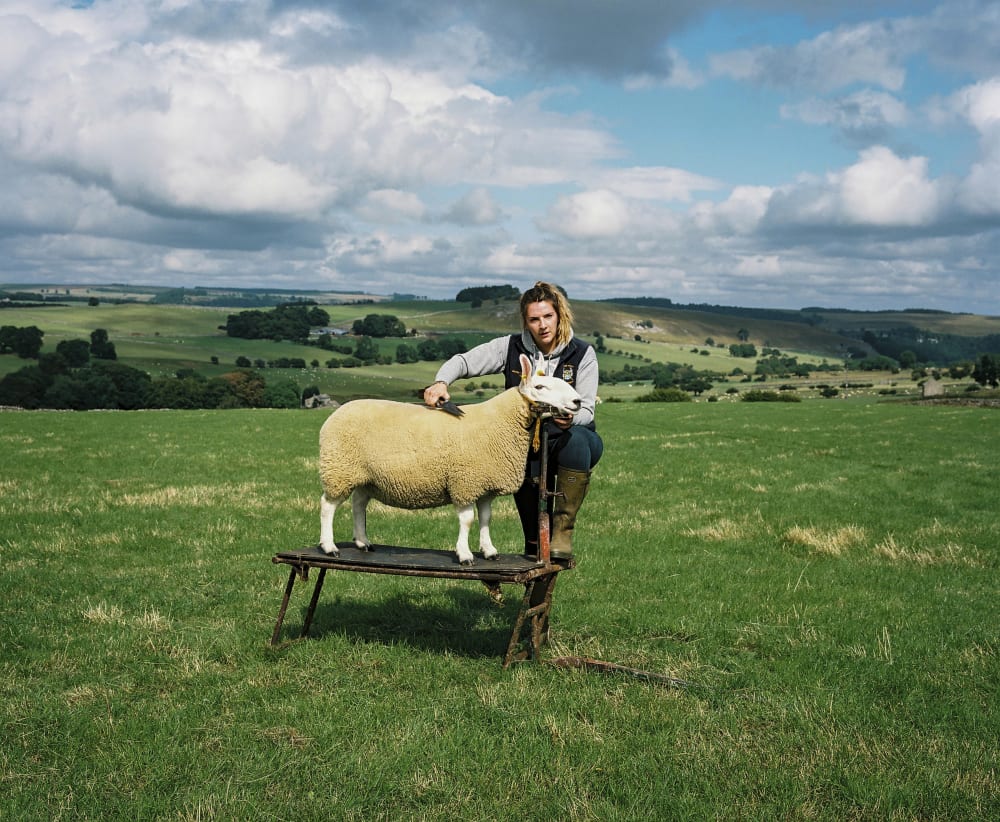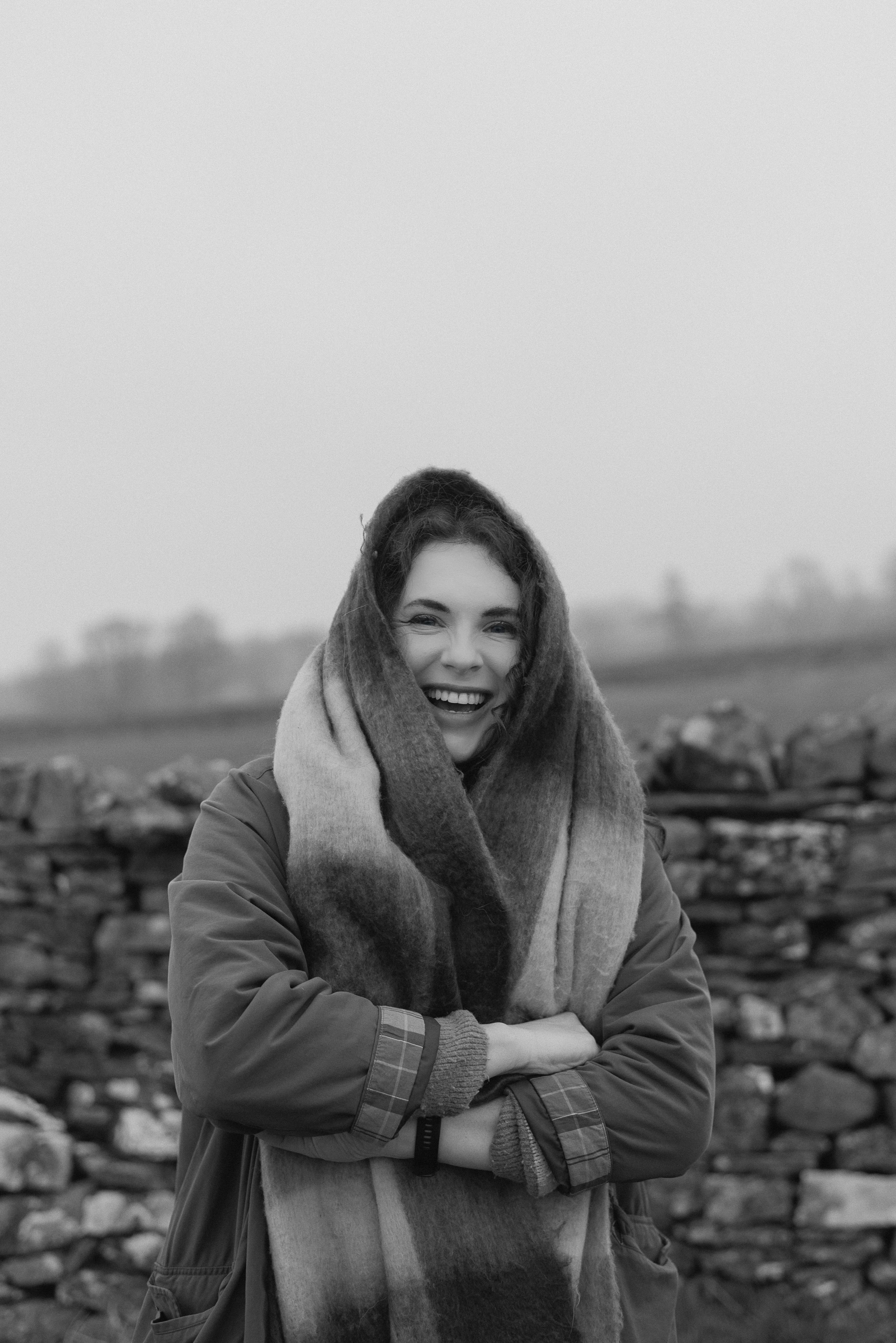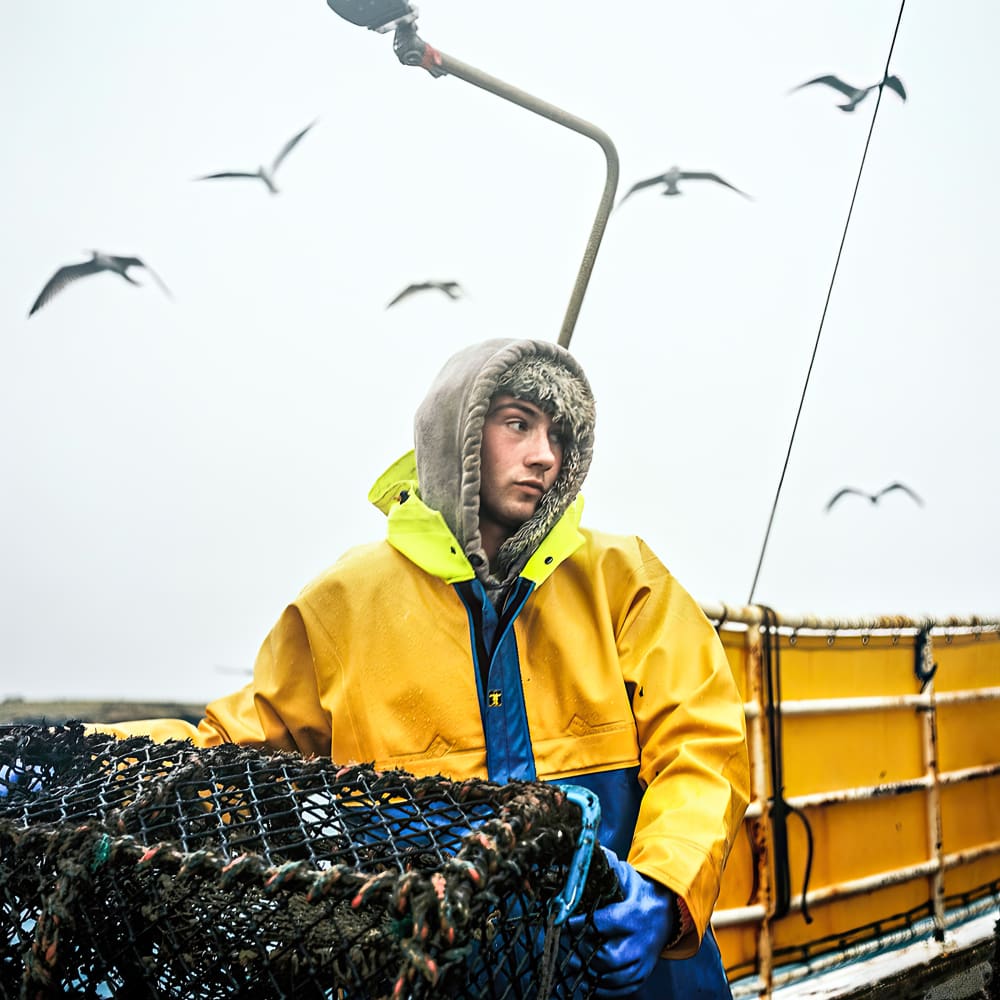
LCC graduate Joanne Coates wins the Baltic Vasseur Artist Award

- Written byEleanor Harvey
- Published date 09 April 2024

Joanne Coates is a working class visual artist who lives and works across the North East of England.
Through her photography, she looks at rurality, hidden histories and inequalities, and explores how to tell stories. She wants us, not to feel pity for the people in her work, but to learn something deeper about ourselves. Can art make us ask questions about who is overlooked and why?
Joanne is a BA Photography graduate from London College of Communication. She recently won the Baltic Vasseur Artist Award for her work, Middle of Somewhere. The award includes an exhibition at the Baltic Centre for Contemporary Art in Gateshead, which opens in May.
She spoke to us about what drew her to photography and the importance of public funding in the arts.

Firstly, congratulations on winning the Baltic Vasseur Artist Award. What does the award mean for you and your practice?
The Baltic is one of the big art spaces for me. It was the gallery that I would go to and be like “wow!”
I think here in the North East we’re lucky to have spaces like The Baltic and MIMA (Middlesbrough Museum of Modern Art) who are really pushing the boundaries with the work they show and their events programmes. To have someone support and believe in my work at a time when the arts are losing public funding is so important.
There was a recent statistic that only around 7.9% of creatives come from working class backgrounds; it doesn’t surprise me, but it worries me. I know I’ve worked really hard, but luck also plays a part in getting something like this.
It means I can focus on a project, explore ideas and push my practice. I still need to do farm work, juggle other commissions but the belief from an institution I value highly is so important. Before this I was really thinking can I continue to do this? As an artist who is neurodivergent, the time and energy it takes to be a full-time freelance artist with another job takes its toll, and I was really considering “what is my place?”
Well, my place is here in the countryside, decentralized, making work I know about, have lived experience of and care deeply about.

You completed your BA in Photography at London College of Communication in 2015. Can you tell us a bit about your time at LCC?
My first experience with the Arts was really through a foundation course. I didn’t take the traditional route as I didn’t have access to A-levels, and I think this is a big aspect of being a working class creative.
My foundation course was my first real introduction to photography or even had access to equipment. During my foundation I became more visually literate, finding out about artists whose practice I really admired. I noticed most of these photographers had studied at LCC, so I looked into the course.
I was nervous as I didn’t have the background, unlike many of my peers; but I really threw myself into it. I was 25 when I graduated. I really enjoyed the experimental photography in my second year, playing with different alternative process methods. Screen printing. Making zines. I spent lots of time in the print room.
One of my favourite elements was theory with the tutor Paul Tebbs. My final year tutor was Tom Hunter whose work and class background kept me going even though I struggled financially. The course had a very fresh and forward-thinking approach to photography, and to other mediums, which I really enjoyed.

What drew you to photography?
Good question! The camera gave me a way of articulating what I couldn’t communicate through words with the world. I first came across photography via photo essays, the power of sequencing and narrative driven practice. The starting point for me was always more literary fiction, storytelling.
What are we doing when we tell stories with images, are we enforcing stereotypes or showing something new?
I’m interested in how to tell stories, hidden narratives, what role art can play within this, how it can express a different narrative, how the focus can be on issues that are usually ignored. Can the whole project and different elements of practice make us ask questions about who is overlooked and why, in a way where we don’t just feel pity or sympathy but can glean something? I think photography has this unique power to hold and build a relationship with time.

What did you do after graduating?
I went back to the North of England. I was nervous and thought I was leaving it all behind, but all my work really looks at Northern-ness. I realised I was happy working up here. I was lucky to get support to make work in Orkney and continue my series ‘North Sea Swells’ from my foundation year. This went on to be published and made into a sell-out zine.
From there it was perseverance and finding my place. I started taking on assignments, doing socially engaged work with young working class adults. I got a wonderful commission with The Maltings which was 12-months looking at gender and agriculture. I really wanted to make it work despite being away from any art networks. I did farm work alongside my practice to pay the bills and I feel slowly that has become a part of my practice. I’ve received a grant to explore this further and worked with working class rural women in my series ‘The Lie of the Land’ as part of the Jerwood/Photoworks Award.

Can you tell us about your photographic style? What/who influences you?
My style is about collaboration and lived experience. It’s a gentle approach, often long form documentary, working in slow ways, often with film. I’m really interested in sequencing and combining sound, installation and other elements with photography. I’m inspired by the Labour Movement in art, which was about working together.
I don’t know if it would be classed as a style but valuing the knowledge the communities I work with, and their understanding of their own spaces is vital. The main themes I explore are rural issues, working class life, northern identity and post capital society.
The artists I enjoy the most are: Helen Cammock, Jo Spence, Andrei Tarkovsky, Nan Goldin, Tish Murtha, Carolyn Drake, Ciaran Og Arnold, Franki Raffles, Judith Joy Ross, Boris Mikhailov, August Sander, Lewis Hine, Chris Killip, Christopher Nunn, Jim Brook, Jeremy Deller.
It changes depending on what I’m thinking about, what I’m researching. All their work to me at least speaks of something more than a singular image, they’re all telling complex stories with their photography, sound, words, installations, curation (although in really different ways) and I think that is what interests me the most.
I mainly find inspiration from cinema, daily life and literature. Really, I’m outside of the art world, so often admiration comes from just being and doing, finding ideas through my own community.

Your exhibition at the Baltic Centre for Contemporary Art in Gateshead opens in May. What has this experience been like?
I’m currently in full ‘final months towards show’ mode so it’s hard to say or reflect. Enjoyable, exciting, nerve wracking.

What’s next for you?
I’m continuing to work on the series Middle of Somewhere and looking for more people so if you’re a rural young person affected by the cost of living who can’t find housing - it would be good to chat.
I’m continuing work on the Daughters of the Soil series, as well as working on a Historic England working class histories grant called A wing and a prayer - focusing on pigeon fancying in East Cleveland. I’ve also received a big commission looking at custodians of the land who do it differently, with a focus on nature and regenerative farming.
My work is also part of After the End of History: British Working Class Photography 1989 – 2024 [LINK], a Hayward Gallery touring exhibition throughout 2024.
Connect with Joanne:
- Check out her website joannecoates.co.uk/
- Follow her on Instagram @joannecoates_
